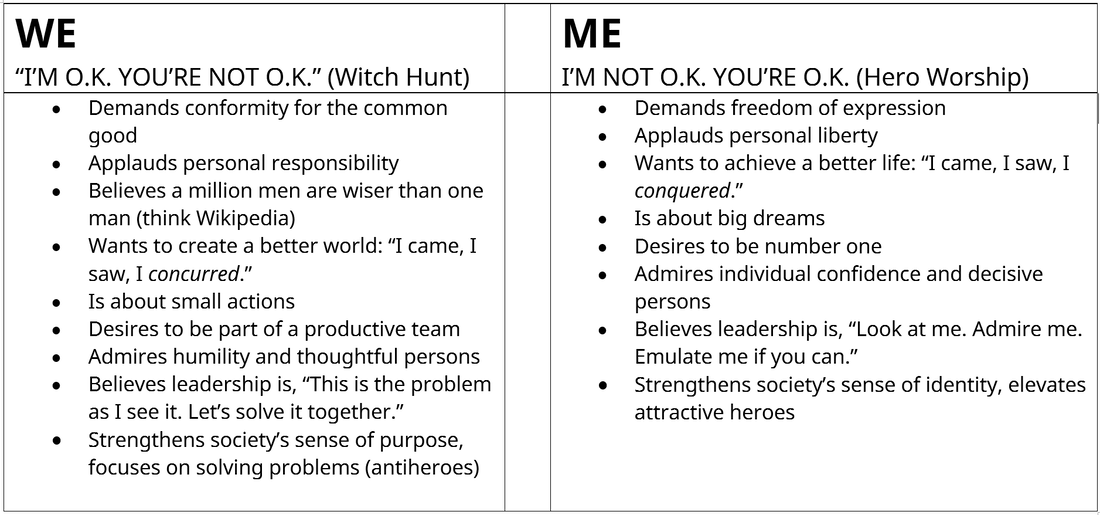Jamie Jean Schneider DommDigital Strategist for the North American Division What has been will be again, what has been done will be done again; there is nothing new under the sun. Is there anything of which one can say, ‘Look! This is something new’? It was here already, long ago; it was here before our time. No one remembers the former generations, and even those yet to come will not be remembered by those who follow them. —Ecclesiastes 1:9-11 NIV To gain insight into the drivers behind the collective shifts in society, read Pendulum: How Past Generations Shape Our Present and Predict Our Future, by Roy H. Williams and Michael R. Drew. These shifts impact communication and often drive technology and social change. I recommend that, as part of your efforts to understand how to communicate more effectively to your target audiences and fulfill their needs, you not only read and study this book, but also invest the time in reading Generations: The History of America’s Future, 1584 to 2069 by William Strauss and Neil Howe. Good communication requires speaking in a way our audience can appreciate. As a religious organization, we should be using digital technologies to fulfill our audiences’ needs, but to do that, we must first understand what those needs are (as discussed in the previous section), their unspoken expectations, and the forces for change that influence a generation. This section takes the 30,000-foot-view of broader trends that may also be acting upon your target audiences. Generation Z and the Millennials have been leaving the Church at alarming rates; could it be that we simply don’t understand them? We know that people of any given cultural group are always the best suited to reach out and evangelize to their peers. I contend that the same is true with generations. Now, empowering and training members of the youth to reach their own does not permit us to abdicate our function as guides and mentors. We too must seek to understand and cultivate these relationships if we are to bridge the gap and secure the future of the Church in North America and promote the salvation of souls. Pendulum provides an analysis of the current shifts in society and their impact on marketing, technology, and communication. The Social Media + Big Data department of the North American Division has repeatedly used these techniques across a broad range of messaging campaigns, consistently yielding successful results. Even if you don’t have time to read the 200-page book, what follows is a summary of what you need to know to understand and utilize these communication techniques. Pendulum takes Strauss and Howe’s four “generations” (Idealist, Reactive, Civic, Adaptive) and reduces it to two generations covering forty years that oscillate between the “Me” philosophy of individuality, freedom, uniqueness, and potential (peaked in 1983) to the collective “We,” working together for the common good, fixing society’s greatest problems, and adopting a philosophy of authenticity and transparency. Sound familiar? According to this model, we are currently in the upswing of the “We” that should reach its zenith in 2023. Both ideals are always present in society but shifts in dominance occur. Optimal balance is found between the two extremes, and either extreme has negative consequences. The main point is that group behavior is predictable, and we can use this predictability to speak to the masses in a relevant way. There will always be exceptions, and as the authors point out:
For deeper insight into the pros and cons of each swing of the “pendulum,” read the book. To communicate, we must ask, “What is driving the actions and attitudes of the group?”Determine how your mission, programs, product and/or message fits or can be positioned into this paradigm. You may need to reevaluate what your ministry offers to better align with what is relevant to your target audience. See the previous section on understanding your target audience. Figure: 2.3 Values and beliefs that motivate society in “WE” and “ME” cycles (Williams 17) Drivers of a “WE” vs. drivers of a “ME” This shift can be seen in successful advertising campaigns that target a worldview/attitude instead of an age group. In other words, instead of targeting people based on surface level demographics, they are speaking to a shared value that transcends age and race as discussed in the previous section. In Pendulum, the authors point out a well-known example. “Remember L’Oréal’s famous ‘Me’ slogan, ‘Because I’m worth it?’ As society passed the tipping point of 2003 and the ‘Me’ became fully unwound, the old slogan was replaced with, ‘Because you’re worth it’” (Williams 172). During this same period, the successful Army slogan “Be All You Can Be” (1980-2001) changed to “Army of One” (2001-2006) but didn’t perform well because it was “contrary to the idea of teamwork” said Frank Luntz, American political consultant, pollster, and public opinion guru (Ball). The current, more “WE” focused, slogan is “Army Strong.” Figure 16.3 Mindset and values in society during a “WE” cycle (Williams 168) Social media is a powerful tool for member care and service. Never before has “truth in advertising” been so important. The younger generations are the most connected, more than any before them, and they naturally turn to social media to voice their displeasure with a brand or experience. “Your advertising [messaging] may fool one of us. But that one will tell the rest of us,” says Roy H. Williams (172). Figure 16.5 Tips to create a serious Internet presence during a “WE” cycle (Williams 172) Self-effacing transparency is utterly disarming. “We want the truth, even if it’s ugly. Shrink-wrapped, sugar-coated, phony posing [of the 80’s through mid-90’s] is no longer acceptable” (Williams 163). Humility, straight talk, and a genuine point of view is what the Adventist Church and its ministries need to embrace; we see the effectiveness of this strategy in the success of initiatives like Gorgeous2God. Gorgeous2God is a community of young Christian women tackling real issues from a godly perspective. True stories from the experiences of real girls are shared and communicated in a candid way that the Church has not embraced previously. Topics include rape, self-harm, sex before marriage, depression, abuse, and other “uncomfortable” topics. Recognizing the underlying cultural principles in a “WE” generation provides guidance and strengthens our abilities to reach our target audience with relevant content, increasing meaningful impact. As a result of continued audience-focused messaging and content development, Gorgeous2God has grown to over 45K followers on social media, with over 20K visitors to the website a year, countless interactions and hundreds of direct messages (as of July 2019).
Analyze your audience; consider the factors discussed in this section and the previous section to then shape your communications in a way that aligns with the drivers behind the current (broad) shifts in society. Position your ministry for success. You will always have outliers within your target audience, but utilizing this knowledge allows your ministry to fish more effectively and increases the potential for a larger catch. Sources: Ball, Molly (January 6, 2014) “The Agony of Frank Luntz.” The Atlantic. Williams, R.H., & Drew, M. R. (2012). Pendulum: how past generations shape our present and predict our future. New York: Vanguard Press. 12/19/2023 12:54:58 pm
This article is an engaging abundance of enlightening information that is intriguing and elegantly composed. I praise your diligent work on this and thank you for this data. You have what it takes to get consideration. 6/11/2024 11:03:10 pm
I needed to thank you for this phenomenal read!! I unquestionably adored each and every piece of it. I have you bookmarked your site to look at the new stuff you post. Comments are closed.
|
Archives
August 2020
Categories
All
|
- Home
- BLOG
-
RESOURCES
-
RESOURCE MENU
>
- ADVENTIST IDENTITY GUIDELINES
- BIG DATA RESOURCES
- BRANDING, IMAGE & DESIGN RESOURCES
- CHURCH/MINISTRY SPECIFIC RESOURCES
- COPYRIGHT & TRADEMARK BASICS
- COURSES
- EMAIL RESOURCES
- GUIDANCE FOR HIRING SOCIAL MEDIA POSITIONS
- PODCASTS
- REPORTS & CASE STUDIES
- SOCIAL MEDIA RESOURCES
- (SOCIAL) VIDEO RESOURCES >
- TEXTING 4 CHURCHES
- TRACKING & ANALTYICS
- WATCH VIDEOS & TUTORIALS
- WEBSITE TIPS
- SOCIAL MEDIA GUIDELINES
-
RESOURCE MENU
>
- SEO
- Digital Discipleship & Evangelism
- COVID-19 RESOURCES
- eNEWSLETTER





 RSS Feed
RSS Feed